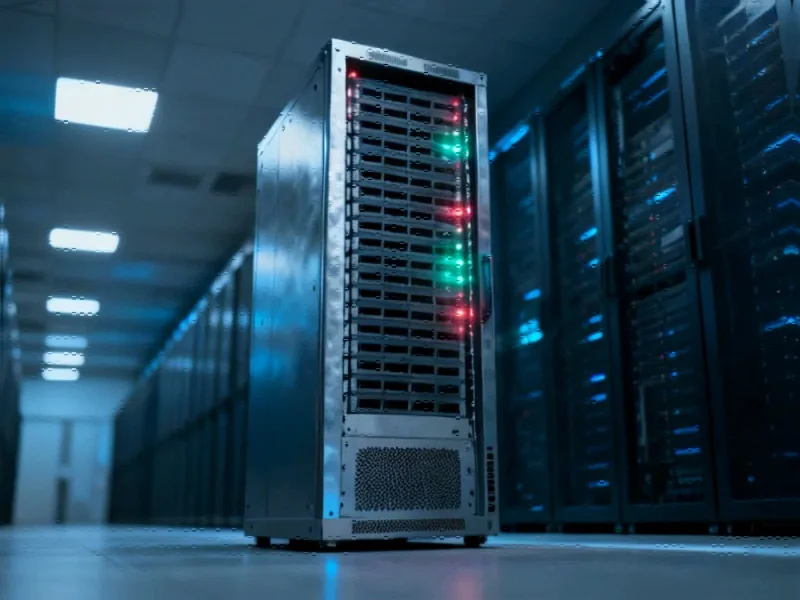The Fragile Foundations of Our Digital World
The recent AWS outage that disrupted services worldwide has exposed a critical vulnerability in our increasingly centralized internet infrastructure. What began as a routine night for many turned into a global demonstration of how dependent we’ve become on a handful of cloud providers. The incident, stemming from a DNS configuration error, wasn’t merely a temporary inconvenience—it was a warning about the systemic risks of cloud concentration.
For approximately three hours, millions of users found themselves locked out of popular platforms and services. From gaming communities unable to access Roblox to researchers struggling with Perplexity’s search capabilities, the ripple effects were immediate and widespread. This event underscores what experts have been warning about for years: our digital ecosystem has become dangerously concentrated in too few hands.
The Cloud Oligopoly: Market Share and Its Implications
Amazon Web Services controls approximately one-third of the global cloud infrastructure market, while Microsoft Azure and Google Cloud collectively account for another significant portion. This triopoly structure creates both efficiencies and vulnerabilities. While these companies have earned their positions through reliable service and continuous innovation, their dominance creates systemic risks that extend far beyond their immediate customers.
The concentration problem isn’t limited to consumer-facing services. Critical infrastructure, government operations, and financial systems increasingly rely on the same underlying cloud platforms. This creates what risk analysts call “correlated failure points”—when one system fails, it can trigger cascading effects across seemingly unrelated services and industries.
Global Internet Resilience Tested by Single Cloud Failure
The AWS incident serves as a real-world stress test for global internet resilience, demonstrating how a single cloud provider’s technical issues can impact users across continents. Unlike the early internet’s distributed architecture, today’s web flows through increasingly narrow channels controlled by major cloud providers.
This centralization contradicts the original design principles of the internet, which was built to withstand nuclear attacks by routing around damage. Modern cloud architecture, while efficient, creates precisely the kind of single points of failure that the internet’s founders sought to avoid. The recent global internet disruption highlights cloud concentration risks in stark terms, showing how technical misconfigurations in one company’s systems can have worldwide consequences.
Industry Responses and Emerging Solutions
Across the technology sector, organizations are reevaluating their cloud strategies in light of these reliability concerns. Some enterprises are adopting multi-cloud approaches, distributing workloads across different providers to mitigate single-vendor risks. Others are exploring hybrid models that combine cloud services with on-premises infrastructure for critical operations.
The engineering community is also responding to these challenges. Professional organizations like the South African engineering bodies convening 2026 symposium are increasingly focusing on distributed systems design and fault-tolerant architecture. Similarly, companies are investing in strategic expansion initiatives that include geographic distribution of data centers to enhance redundancy.
Technological Innovations and Future Directions
Emerging technologies offer potential pathways toward a more resilient internet infrastructure. Edge computing, which processes data closer to its source rather than in centralized cloud data centers, represents one promising approach. Decentralized web technologies, including blockchain-based systems and peer-to-peer networks, also offer alternative architectures that could reduce dependence on major cloud providers.
Recent industry developments in foundation model integration demonstrate how companies are working to create more robust AI systems that can function across different infrastructure environments. Meanwhile, related innovations in other sectors show how organizations are building redundancy into critical systems.
Navigating the Centralization Dilemma
The AWS outage presents a complex challenge without simple solutions. While cloud centralization has driven incredible efficiencies and enabled technological advances that would have been impossible with more distributed approaches, it has also created vulnerabilities that threaten global digital stability.
Moving forward, businesses, governments, and technology providers must work together to strike a balance between the efficiency of concentration and the resilience of distribution. This will require new architectural approaches, updated regulatory frameworks, and continued investment in alternative technologies that can provide backup when primary systems fail.
The conversation about cloud concentration is no longer theoretical—the recent outage makes it clear that we must address these structural vulnerabilities before more critical services are affected. As our dependence on digital infrastructure grows, so does the importance of ensuring that this infrastructure can withstand the failures that inevitably occur in even the most well-managed systems.
This article aggregates information from publicly available sources. All trademarks and copyrights belong to their respective owners.
Note: Featured image is for illustrative purposes only and does not represent any specific product, service, or entity mentioned in this article.



